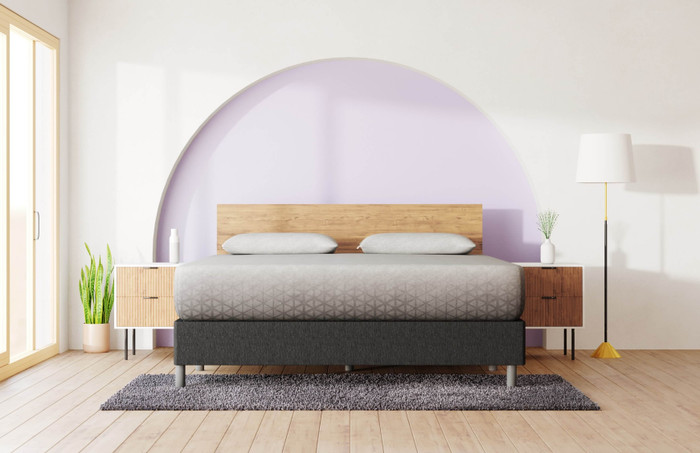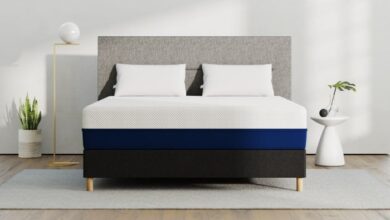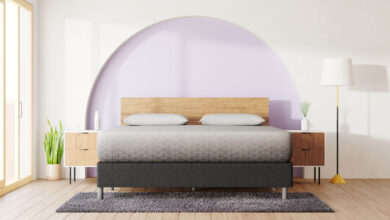How to Sleep with Hidradenitis Suppurativa? Zoma UK

September 17th, 2025 . 11 mins read
Key Takeaways
- Sleeping position makes a big difference—back or side sleeping with supportive pillows helps reduce friction, pressure, and pain, while stomach sleeping may offer temporary relief in some cases.
- Bedding and environment matter—breathable fabrics, cooling sheets, and protective mattress covers minimize sweat, irritation, and hygiene concerns during the night.
- A tailored nightly routine supports better rest—gentle cleansing, pain management, stress reduction, and consistent schedules ease discomfort and promote restorative sleep.
Living with Hidradenitis Suppurativa (HS) isn’t just about managing flare-ups during the day—it’s also about finding rest at night.
Painful lesions, friction, night sweats, and the fear of ruptures often make quality sleep difficult.
Yet, restorative rest is essential for healing, reducing inflammation, and protecting mental health.
If you’re wondering how to sleep with HS pain, you’re not alone.
Simple changes—like adjusting your sleeping position for hidradenitis suppurativa, using breathable bedding, and keeping your sleep environment cool—can ease discomfort and make nights more manageable.
With the right approach, better sleep and more energized mornings are possible.
Best Sleeping Positions for HS
When living with hidradenitis suppurativa (HS), sleep can often feel like a challenge.
The painful lesions, inflammation, and friction make it difficult to find a comfortable position that doesn’t worsen symptoms.
Choosing the right sleeping posture plays a major role in reducing pressure on sensitive areas and improving the quality of your rest.
1. Back Sleeping (Supine Position)
Back sleeping is one of the most effective positions for people with HS, especially if lesions are concentrated in the groin, thighs, or underarms.
Lying flat on your back reduces friction between skin folds and prevents direct pressure on inflamed areas. To make this posture more supportive, place a pillow under your knees.
This not only relieves strain on your lower back but also helps align your body so you remain comfortable throughout the night.
Many individuals with HS find that this position significantly improves rest quality and reduces the chance of waking up from pain.
2. Side Sleeping (Lateral Position)
Side sleeping can also be beneficial, provided you avoid lying on the side where active lesions are present. For example, if HS affects one armpit or thigh, resting on the opposite side can relieve pressure and prevent irritation.
To make this posture even more comfortable, place a soft pillow between your thighs. This prevents skin-to-skin contact in the groin area and reduces friction, which can be particularly useful on warmer nights when sweat makes the skin more sensitive.
Side sleeping often feels more natural for many people, making it a sustainable long-term option for managing HS at night.
3. Stomach Sleeping (Prone Position)
For those with HS concentrated in the buttocks, stomach sleeping may provide temporary relief since it shifts pressure away from the affected region. However, this position comes with certain drawbacks.
Sleeping on your stomach can strain your neck and spine, leading to long-term discomfort.
If you do prefer this position, use a thin pillow—or no pillow at all—under your head to keep your spine in a more neutral alignment.
While not the healthiest option overall, it can serve as a short-term solution during flare-ups when other positions feel too painful.
Using Extra Pillows for Better Comfort
No matter which positions you choose, pillows can play a big role in improving your comfort.
Keeping extra pillows nearby allows you to experiment with support and positioning throughout the night.
You can use them to elevate certain areas, relieve pressure points, or create a cushion barrier that reduces friction. These small adjustments often make a noticeable difference, helping you sleep more soundly and wake up with less irritation.
By tailoring your sleep setup to your specific HS symptoms, you can create a routine that encourages healing and better overall rest.
Why Sleeping Position Matters for HS?
Hidradenitis suppurativa (HS) is a chronic skin condition marked by painful nodules, boils, and lesions that often appear in sensitive areas such as the underarms, groin, buttocks, and inner thighs.
These flare-ups can make something as simple as lying down at night incredibly uncomfortable.
Many people with HS report disrupted sleep because pressure, heat, and friction worsen their pain.
Since quality rest is essential for healing and overall well-being, the position you sleep in can make a major difference in how your body feels.
By finding a posture that reduces friction and limits direct strain on affected areas, you can create a more restful and healing sleep environment.
How to Improve Sleep with HS?
While sleep disturbances are common in people with Hidradenitis Suppurativa (HS), the good news is that there are ways to make nights more restful.
Small changes in sleep environment, daily routines, and symptom management can add up to significant relief.
1. Choose Breathable Bedding and Clothing
Heat and moisture control are essential for people with HS, and the right bedding choices can make a noticeable difference.
Opting for soft, breathable fabrics such as cotton or bamboo helps wick away sweat and reduce skin irritation.
Loose-fitting, tag-free pajamas prevent lesions from being rubbed or pressed by seams, while moisture-wicking sheets or a cooling mattress topper can help regulate body temperature and reduce night sweats.
Washing bedding frequently is also important, since clean sheets lower the risk of bacterial buildup and eliminate odor concerns. By creating a cooler, cleaner sleep environment, the skin stays calmer through the night, reducing discomfort that often interrupts sleep.
2. Nighttime Skincare and Hygiene Routine
Maintaining skin health before bed is key to reducing nighttime irritation. A warm (not hot) shower can help relax muscles while gently cleansing sweat and debris from the skin.
Dermatologist-recommended antiseptic washes or medicated cleansers may further reduce bacterial growth that contributes to HS flare-ups. After bathing, it’s best to pat the skin dry with a soft towel rather than rubbing, since friction can aggravate lesions.
Applying prescribed topical treatments—such as antibiotics, retinoids, or anti-inflammatory creams—can support healing, while barrier creams or zinc oxide in skin folds provide a protective layer to reduce friction.
With consistency, this nightly routine can calm inflammation and allow for more restful, uninterrupted sleep.
3. Managing Pain Before Bedtime
Pain from HS often peaks at night, making it difficult to fall or stay asleep.
Simple steps can help manage discomfort before bedtime. Warm compresses or sitz baths soothe painful nodules and reduce inflammation, preparing the skin for rest.
Over-the-counter pain relief, such as ibuprofen or naproxen, may also provide relief if approved by a doctor. For localized pain, topical numbing agents like lidocaine gels can temporarily ease sensitivity.
Alongside these physical measures, mind-body practices such as gentle stretching, meditation, or deep breathing not only calm the nervous system but also reduce stress-related flare-ups. Together, these approaches ease discomfort so the body can settle into restorative rest more easily.
4. Manage Stress Before Bed
Stress and anxiety are common sleep disruptors, particularly for people coping with a chronic condition like HS. Creating a calming pre-sleep routine can help prepare both the mind and body for rest.
Journaling to release lingering worries, listening to soothing music, or practicing guided meditation can help quiet racing thoughts. Gentle stretching and deep breathing lower cortisol levels, while therapy or support groups can provide much-needed emotional reassurance.
When the mind is in a more relaxed state, the body is better able to slip into deep, restorative sleep, making nights more restful and mornings more refreshed.
5. Adjust Medication Timing
Some medications used to manage HS can affect sleep quality, and adjusting the timing may help.
For example, taking steroids or antibiotics earlier in the day may reduce nighttime restlessness.
On the other hand, reserving mild pain relief for bedtime can make it easier to fall asleep comfortably. These changes should never be made without medical guidance, but talking openly with a healthcare provider about sleep difficulties may lead to safe adjustments in dosage or schedule.
Even small changes in medication timing can have a significant impact on how well you sleep.
6. Keep Skin Clean and Protected
Nighttime hygiene doesn’t just soothe the skin but also makes sleep more comfortable. A quick shower before bed helps remove sweat, bacteria, and excess oils that could otherwise irritate lesions.
Applying doctor-recommended creams, antiseptic washes, or protective dressings can further reduce irritation and leakage.
Soft, hypoallergenic bandages may also be used to protect clothing and bedding, reducing anxiety about drainage and making it easier to relax.
Protecting the skin in this way allows for better comfort and peace of mind throughout the night.
7. Find Comfortable Sleep Positions
Since HS lesions often form in areas that press against the mattress, experimenting with different sleep positions can make a big difference.
Many people find relief by sleeping on their back with a pillow under the knees to reduce pressure, or on their side with a body pillow to prevent friction in the groin and underarm areas.
Specialty cushions or wedge pillows can also help lift sensitive areas away from direct pressure, reducing the chance of painful flare-ups during the night. Over time, finding a “go-to” sleep position that minimizes contact with inflamed skin can improve sleep consistency and comfort.
8. Lifestyle Adjustments for Better Sleep
Beyond skincare and bedding, small lifestyle adjustments can also improve sleep with HS. Going to bed and waking up at the same time every day strengthens the body’s circadian rhythm, making it easier to fall asleep naturally.
Avoiding heavy meals late in the evening helps reduce sweating and digestive discomfort, while staying hydrated during the day supports skin healing without forcing frequent bathroom trips at night.
Limiting caffeine is equally important, since both can aggravate HS symptoms and interfere with sleep quality. Over time, these small daily habits build a stronger foundation for long-term rest.
9. Create a Consistent Sleep Schedule
Consistency is one of the most effective tools for better sleep.
Setting a regular bedtime and wake-up time trains the body to expect rest at certain hours, improving sleep onset and reducing nighttime awakenings.
Pairing this with an ideal bedroom environment—cool, dark, and quiet—helps signal to the brain that it’s time to rest. Over time, the body begins to associate bedtime with relaxation, making sleep not only easier to achieve but also more restorative.
Why Sleep Is So Difficult with HS?
Living with Hidradenitis Suppurativa (HS) is already challenging during the day, but for many people, the night can be even harder.
Sleep is often disrupted by pain, discomfort, and the emotional stress that comes with this chronic skin condition.
1. Pain and Pressure
One of the biggest reasons people with HS struggle to sleep is constant pain from lesions in high-pressure areas. Common spots such as the underarms, groin, buttocks, and under the breasts are places that naturally get pressed or stretched while lying down.
When these tender, inflamed lumps come into contact with the mattress or pillow, the pressure can feel unbearable, leading to tossing and turning throughout the night.
This discomfort makes it hard to find a comfortable position, and for some, even short periods of rest are disrupted by sharp or throbbing pain. Over time, this cycle of pain and broken sleep can leave the body exhausted and slow down healing.
2. Night Sweats and Friction
Excessive sweating and constant friction are other reasons HS interferes with sleep. The body often heats up at night, and if you’re sleeping in a warm room or under heavy bedding, moisture builds up around sensitive areas.
Sweat combined with natural skin folds can increase irritation, making lesions feel more inflamed.
On top of this, friction from clothing or bedsheets rubbing against open sores can cause further pain and sometimes even reopen healing wounds.
For many, this creates a vicious cycle—moisture causes irritation, irritation worsens pain, and pain prevents deep rest. Proper sleep hygiene and breathable bedding become even more critical for people with HS.
3. Anxiety and Stress
The emotional toll of HS is just as real as the physical pain, and it directly impacts sleep quality.
Many people go to bed worried about flare-ups, drainage, or possible odors, leading to anxiety before even trying to fall asleep.
These thoughts can trigger insomnia or cause frequent awakenings during the night. Stress hormones like cortisol remain elevated when you’re anxious, making it even harder for the body to relax into deep, restorative sleep.
Over time, this combination of emotional strain and poor rest can fuel a cycle of worsening HS symptoms, since stress itself is a common trigger for flare-ups.
4. Medication Side Effects
Lastly, some treatments for HS can interfere with natural sleep cycles.
While antibiotics, pain relievers, or biologics may help manage symptoms, they can sometimes cause side effects such as restlessness, vivid dreams, or gastrointestinal discomfort.
Steroid-based treatments in particular may disrupt the body’s normal rhythm and make falling asleep more difficult.
On the other hand, pain medication taken late at night may help temporarily but can leave you groggy in the morning, affecting overall sleep quality.
Being aware of these possible side effects can help patients work with their healthcare provider to adjust timing or dosage for better nighttime comfort.
How to Choose the Right Mattress for HS Relief?
1. Medium-Firm Support
Balance is everything when it comes to mattress firmness for HS. A mattress that’s too soft allows your body to sink deeply, which can create extra folds in the skin and increase painful friction between lesions.
On the other hand, a rock-hard mattress places unnecessary pressure on sensitive areas, worsening pain instead of easing it.
A medium-firm mattress strikes the ideal balance: it cushions the body enough to relieve pressure points while still keeping you properly supported.
This helps prevent flare-ups caused by poor alignment or too much compression on already inflamed skin.
2. Memory Foam or Hybrid Mattresses
For HS patients, the material of the mattress can make or break comfort. Memory foam is a popular option because it molds to the body, evenly distributing weight and relieving pressure from sore areas like the groin, underarms, or buttocks.
Hybrid mattresses combine the benefits of memory foam with the support of innerspring coils, making them great for those who want both contouring comfort and breathability.
Hybrids also tend to provide better airflow than traditional memory foam, reducing heat buildup—a common HS trigger.
3. Cooling Features
Heat and sweat are known to aggravate HS, making temperature regulation a top priority in mattress selection.
Mattresses with cooling features—such as gel-infused foam, open-cell technology, or breathable fabric covers—can help wick away body heat and keep the sleep surface cool.
Pairing your mattress with cooling accessories, such as a gel pillow or moisture-wicking sheets, can further minimize night sweats and irritation, giving you a more restful and refreshing night’s sleep.
4. Adjustable Beds
For many people with HS, sleeping flat can worsen skin-on-skin contact and pressure in flare-prone areas. Adjustable beds provide a solution by allowing you to elevate your head, legs, or both.
Elevation helps improve circulation, reduce friction, and create more comfortable sleeping positions tailored to your needs.
If you experience HS flare-ups in the groin or buttocks, being able to slightly raise your legs can make a world of difference in pain reduction.
5. Protective Mattress Covers
HS flare-ups that drain can leave behind stains and odors that are difficult to remove from a mattress. That’s why a waterproof, breathable mattress protector is an essential investment.
Not only does it keep your mattress clean and hygienic, but it also extends its lifespan by shielding it from bacteria and moisture.
Choose a soft, quiet cover that won’t crinkle or irritate your skin, ensuring your sleep environment stays both comfortable and sanitary.
6. Mattress Toppers for Extra Comfort
If buying a brand-new mattress isn’t an option, a high-quality topper can still improve your sleep. Memory foam toppers provide extra cushioning and pressure relief, while cooling gel toppers actively work to regulate body temperature during the night.
Egg-crate foam toppers are another budget-friendly choice, offering both added airflow and comfort.
These toppers can make an older mattress more supportive and better suited to HS needs without requiring a full replacement.
7. Rotation and Mattress Lifespan
Even the best mattress won’t last forever, and for HS patients, sagging or uneven surfaces can make painful pressure points even worse. To maintain even support, rotate your mattress every 3–6 months.
This prevents body impressions from forming and helps distribute wear evenly. If your mattress is more than 7–10 years old and shows signs of sagging, lumps, or lost firmness, it may be time to replace it with a model that better supports your health and comfort.
8. Consider Latex Mattresses
Latex mattresses are another excellent option for people with HS. Natural latex is naturally breathable, hypoallergenic, and supportive, making it a healthier choice for sensitive skin.
Unlike traditional memory foam, latex doesn’t trap heat as easily, keeping you cooler throughout the night. Its durability also ensures long-term support, which is especially important if you deal with chronic HS pain that requires consistent pressure relief.
9. Soft Edge Support
Edge support is often overlooked but can have a big impact on HS patients.
Some mattresses have hard, reinforced edges that press uncomfortably against the skin when you shift or sit on the side of the bed.
A mattress with softer, more cushioned edges allows you to move around without friction or irritation. This can make it easier to change sleeping positions during the night without waking up from pain.
10. Trial Periods and Returns
Choosing the right mattress for HS isn’t always straightforward—it often requires testing different firmness levels, materials, and cooling options.
Luckily, many modern mattress brands now offer 90- to 100-night trial periods, giving you time to determine whether the mattress truly eases your HS-related discomfort.
If it doesn’t, you can return or exchange it with minimal risk. This makes investing in the right mattress much more accessible and less stressful.
When to Talk to Your Doctor?
If HS pain is consistently preventing you from sleeping, speak to your dermatologist or primary care provider. They may recommend:
- Stronger pain management options
- Biologics (like adalimumab) to control inflammation
- Hormonal therapy (for women with HS linked to hormonal changes)
- Referral to a sleep specialist if insomnia becomes chronic
Emotional Well-Being and Sleep
Sleep problems with HS are not just physical—they affect your mental health too. Anxiety, depression, and isolation are common among HS patients. Consider:
- Journaling before bed to release anxious thoughts.
- Cognitive Behavioral Therapy for Insomnia (CBT-I) if stress keeps you awake.
- Support Groups (online or local) to connect with others who understand HS struggles.
FAQs
Can I use ice packs before bed for HS pain?
Yes, applying a cold pack for 10–15 minutes before bed can help numb HS pain and reduce swelling. Always wrap the ice pack in a soft cloth to protect your skin from frostbite. Cooling therapy provides temporary relief and may make it easier to settle into restful sleep.
What’s the best pillow for HS?
The right pillow can make a big difference in HS comfort. Memory foam or body pillows are excellent because they adjust to your body, relieve pressure points, and reduce skin friction. Experiment with positioning pillows around affected areas to minimize discomfort and support a healthier, more restful night’s sleep.
Can lack of sleep worsen HS?
Yes, poor sleep can directly impact HS symptoms. Inadequate rest raises stress hormone levels and inflammation in the body, both of which may trigger flare-ups. Prioritizing consistent, quality sleep is important, as it helps regulate the immune system, reduce irritation, and promote overall healing, making HS flare-ups less frequent.
Should I bandage HS lesions before sleep?
Covering HS lesions before bedtime is often recommended, especially if they are draining. Using sterile dressings protects your bedding, prevents friction, and lowers infection risk. Choose breathable, non-stick bandages that won’t irritate skin. Properly dressing the area helps you rest more easily while maintaining comfort and supporting nighttime skin healing.
What’s the best sleeping position for HS?
Your sleeping position should depend on the areas most affected by HS. Side or back sleeping generally works best, with pillows strategically placed to relieve pressure. A body pillow or wedge cushion can keep painful spots elevated and reduce friction, allowing you to rest more comfortably and minimize nightly flare-ups.
How can I keep cool at night with HS?
Staying cool at night is essential for HS comfort, since overheating worsens irritation and pain. Lightweight, breathable bedding made of cotton or bamboo helps regulate temperature. Moisture-wicking pajamas, cooling mattress toppers, or a bedside fan can further reduce heat buildup, creating an environment that supports peaceful, uninterrupted sleep.
Can certain fabrics help me sleep better with HS?
Absolutely. Soft, breathable fabrics like cotton and bamboo are best for sleep when managing HS. These natural fibers reduce friction, wick away sweat, and allow the skin to stay cooler. Unlike synthetic materials that trap heat, they provide comfort and help prevent irritation, making restful, flare-free sleep more achievable.
Final Thoughts
Sleeping with hidradenitis suppurativa (HS) is rarely easy, but the right strategies can make a real difference.
By adjusting your sleeping position for HS, choosing a supportive mattress for hidradenitis suppurativa relief, and switching to breathable bedding that keeps skin cool, you can create a sleep environment that reduces pain, friction, and irritation.
Even small steps—like using cooling sheets for HS night sweats, bandaging lesions before bed, or adding pillows for better support—can add up to deeper, more restorative rest.
Most importantly, remember that restful sleep is part of your healing journey.
Prioritizing better sleep not only eases flare-ups but also supports mental health and overall quality of life. With the right care, you can reclaim your nights and finally experience the healing power of sleep.
This article is for informational purposes and should not replace advice from your doctor or other medical professional.



